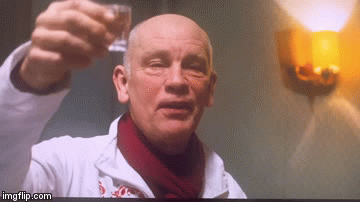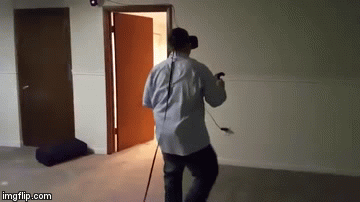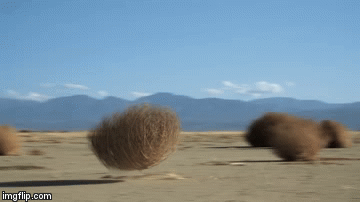

Even today scientists are still studying how ice crystals form. He has lots of low-tech recipes that you can use to impress your friends this Christmas.Īnd if you find ice fascinating, you wouldn't be alone. If you're interested in creating clear ice at home, then check out this list of clear ice experiments created by Camper English for his cocktail science blog Alcademics. Credit: Cropped from Tom & Katrien via Flickr
#TUMBLEWEED GIF FACEBOOK WALL EMPTY PROFESSIONAL#
Professional ice machines often freeze agitated or flowing water slowly in layers to create that crystal clear ice.Ĭlear ice sculpture. Partly because it is so temperamental to form, clear ice is captivating and highly prized by ice sculptors and bartenders in swanky restaurants. This thin layer of ice means light has less distance to travel and thus less chance to scatter before reaching your eye. This lake may have then frozen slowly at high temperature close to 32 degrees Fahrenheit, perhaps even in layers as it rained and then froze.įinally, the hikers in the video appear to walk on a fairly shallow portion of the lake. A lack of impurities and gases is crucial to forming clear ice. On a map, Veľké Hincovo pleso doesn't appear to have any rivers feeding into it, so clean rain is probably its main source of water. In the case of this natural glacier lake, it is likely that the water is very pure. Credit: Michal Klajban via Wikimedia Commons Veľké Hincovo pleso in the High Tatras, Slovakia. A slow freezing also allows bigger ice crystals to form, which have few surfaces to scatter light. The key is to freeze water very slowly so that impurities and air bubble have a chance to rise to the surface and, in the case of air, escape. Since light cannot travel in a straight line through the ice, it appears cloudy.īut with the exact right conditions, it is possible to form clear ice. These impurities and small crystals create many surfaces within the ice that can scatter light. Common forms of ice have lots of mineral impurities and trapped air bubbles frozen in amongst relatively small ice crystals. This explains why liquid water is clear, but then why is the ice in your freezer and the ice on most frozen lakes cloudy?Ĭloudiness, or opaqueness, can also be caused by light scattering. The features in this graph are caused by the internal electron structure of the water molecule, which determines what energies of light can excite water.Ībsorption spectrum of liquid water.

If we could see in ultraviolet wavelengths, then water would not appear clear because most of the light would be absorbed before reaching our eyes.

Water does absorb some wavelengths of light, but crucially not visible light, as this plot of absorption across wavelength makes clear (ha). While I was daydreaming, I wondered what caused this particular lake to freeze clear? What's special about its conditions? And can I make clear ice at home? As usual, physics has the answers.Ī substance looks clear or transparent when visible light can pass through it without being absorbed, reflected, or scattered too much. The stark and beautiful scenery of the Slovakian mountains will have to wait until another day. Now, like any self-respecting scientist, I tried to get APS approval to repeat their hike, you know, just to verify the experimental results, but sadly no can do.


 0 kommentar(er)
0 kommentar(er)
